|
During the season of Easter we celebrate feast day of St. Catherine of Siena, one of the four female Doctors of the Church and a woman remembered for her fiery personality and truth-filled words. From a young age, Catherine was favored with mystical visions, the earliest taking place when she was only six or seven. She was out with her brother, running an errand, when she looked up and saw saints in the sky. She saw Jesus seated on a throne, surrounded by saints John, Peter, Paul and others. To her great delight, Jesus smiled at her, then raised his hand and blessed her. This vision had a profound influence upon Catherine and she remembered it the rest of her life.
Jesus is Our Bridge The desire to dedicate her life to God grew stronger as Catherine grew older, and she eventually became a Third Order Dominican, taking on the black and white mantle of the Sisters of Penitence of St. Dominic in 1363. St. Catherine left many writings to us, but her most well known is The Dialogue, written in a very short period of time while she was in ecstasy, around 1377. It records conversations between herself and God, dictated by St. Catherine and written out by her secretaries. Catherine saw that Jesus, through obedience to his Father, made himself into the bridge between Heaven and Earth - the only bridge that could ever cross the huge chasm separating us from God. Journeying back to God along this bridge happens in three different stages. The following excerpt reveals God instructing Catherine in this idea: I want you to look at the bridge of my only-begotten Son, and notice its greatness. Look! It stretched from heaven to earth, joining the earth of your humanity with the greatness of the Godhead. This is what I mean when I say it stretches from heaven to earth. God also explains to Catherine why it was necessary for Jesus to make himself into this bridge. The Dialogue records: This was necessary if I wanted to remake the road that had been broken up, so that you might pass over the bitterness of the world and reach life. ..Your nature had to be joined with the height of mine, the eternal Godhead, before it could make atonement for all humanity. . . so the height stooped to the earth of your humanity, bridging the chasm between us and rebuilding the road. But why should Jesus have made himself into this bridge? So that you might in truth come to the same joy as the angels. But my Son’s having made of himself a bridge for you could not bring you to life unless you make your way along that bridge. The Three Stages of Crossing the Bridge The Dialogue states that it is only by staying securely on this bridge of Christ that souls are able to pass safely over the stormy sea below, as they journey through three different spiritual stages to reach Heaven. The three stages are described in this way: “On the first step, …the soul strips itself of vice, on the second it is filled with love and virtue, and on the third it tastes peace.” The first stage is referred to as “the feet,” when the person decides to turn from sin. Using the body as an image, it is the feet which carry us towards or away from God, to virtuous actions or to sinful occasions. God tells St. Catherine that walking with purified, cleansed feet “are the steps by which you arrive at his side, which manifests to the secret of his heart.” The second stage is closely linked to the first. It is when we replace sin with virtue. Sinful habits and behaviors have to be replaced by virtuous and good habits and behaviors. A soul who stops sinning must be careful to fill the cleansed area inside with the light of God, otherwise she can find herself in an even worse state later on. In the second stage, the person climbs to “the heart” - “the soul, gazing into that open heart with the eye of the intellect, finds it consumed with ineffable love.” The first and second stages “were made with the wood of the cross.” The cross is made of two pieces of wood - the vertical and the horizontal planks. The vertical plank represents the connection between earth and heaven (love for God), while the horizontal wood refers to what we do on earth (love for neighbor). God repeatedly reminds St. Catherine that we cannot say we love God but ignore our neighbor. Love for God is shown through our love for our neighbor, and both aspects are represented by the vertical and horizontal dimensions of Christ’s cross. In these two stages we turn from sin and learn to love as Christ loves. The third stage, “still retains the great bitterness Jesus tasted when he was given gall and vinegar to drink.” During this last stage, the soul participates in some of the suffering of Christ’s passion. However, this is also when the soul finds peace. Represented by “the mouth”, the soul now is able to “find peace from the war it has been waging with sin.” Even though the body of Jesus himself has been lifted up and returned to Heaven, God tells Catherine that “there remains the bridgeway of his teaching, which, as I told you, is held together by My power and my Son’s wisdom and the mercy of the Holy Spirit.” The teachings of Christ have been illuminated and reflected on for us by”the apostles and evangelists, the martyrs and confessors and holy doctors, who have been set like lamps in holy Church” to light the way across the bridge of Christ, to shine light into the darkness of our lives. Those Under the Bridge One of the more touching aspects of The Dialogue is the glimpse we get into the personality of God the Father. Far from being angry and vengeful, he says to all of us, through St. Catherine “I tell you, my dearest children, travel on the bridge, not under it. For the way beneath the bridge is not the way of truth but of falsehood. It is the way of wicked sinners, and I beg you to pray to me for them. I ask for your tears and sweat on their behalf so that they may receive mercy from me.” God does not want to lose a single soul, every person is of immense importance and he does everything he can to bring souls back to him. So the next time you are crossing a bridge, think of St. Catherine and the three stages of the spiritual life. Maybe even send up a small prayer asking for help in “staying on the bridge of Christ.” And don’t forget to offer up some thoughts for those who have fallen under the bridge, as well. St. Catherine of Siena, pray for us!
0 Comments
The below is an excerpt from www.thesacredpage.com, Scriptural reflections written for the Sunday readings by Dr. John Bergsma. This excerpt is for the Gospel reading for Pentecost Sunday. On the evening of that first day of the week, when the doors were locked, where the disciples were, for fear of the Jews, Jesus came and stood in their midst and said to them, “Peace be with you.” When he had said this, he showed them his hands and his side. The disciples rejoiced when they saw the Lord. Jesus said to them again, “Peace be with you. As the Father has sent me, so I send you.” And when he had said this, he breathed on them and said to them, “Receive the Holy Spirit. Whose sins you forgive are forgiven them, and whose sins you retain are retained.” Sometimes this passage is called the “Johannine Pentecost,” but it would be incorrect to pit these two events against one another, as if John was of the opinion that the Spirit was given at one time, and Luke of the opinion that it was dispensed at another. In the Christian life, there are certainly definitive giftings of the Spirit (for example, in Baptism and Confirmation), but the Spirit comes to us continually, not just once. In fact, Luke does record the same event we find detailed in today’s Gospel Reading, although the fact is frequently missed. In Luke 24:49 Jesus says, “Behold, I send the promise of my Father upon you.” Eastertide: Day 42
The Solemnity of the Ascension of the Lord Jesus said to his disciples: “Go into the whole world and proclaim the gospel to every creature. Whoever believes and is baptized will be saved; whoever does not believe will be condemned. These signs will accompany those who believe: in my name they will drive out demons, they will speak new languages. They will pick up serpents with their hands, and if they drink any deadly thing, it will not harm them. They will lay hands on the sick, and they will recover.” So then the Lord Jesus, after he spoke to them, was taken up into heaven and took his seat at the right hand of God. But they went forth and preached everywhere, while the Lord worked with them and confirmed the word through accompanying signs. -Mark 16:15-20 Eastertide: Day 40 Today, we begin the final countdown of the days of Eastertide as we begin the Novena to the Holy Spirit. This day of 9 linked prayers will end on Saturday, May 22, the eve of Pentecost Sunday, when the 3rd person of the Holy Trinity descended into the Upper Room, upon the frightened little band of followers. The arrival of the Holy Spirit absolutely transformed them. Each person changed from being confused and unsure to confident and courageous. They left the Upper Room, bursting out into the crowded streets which were full of pilgrims who were in Jerusalem at that time for Passover. They boldly proclaimed the Good News of Jesus' resurrection and ascension back to heaven. And they did it with hearts filled with joy. They were so joy-filled, in fact, that people passing by thought they were drunk, even though it was early in the day. The Catholic tradition of praying novenas is based on the 9 days between Jesus' ascension and the descent of the Holy Spirit. Spiritually, we sit in the Upper Room with those first disciples, waiting, watching and praying. The Novena to the Holy Spirit is the original novena, the template for all other novenas that we pray during the year. If you've never prayed a novena, this is the one to start with! You can join in on a worldwide community of novena pray-ers by going to one of my favorite websites, www.praymorenovenas.com, and signing up. It's free and you will receive daily reminders and prayers to say. In addition to praying the novena, you've still got time to print out and color the "Come Holy Spirit" picture from www.looktohimandberadiant.com, which I posted back on Day 16 of the Eastertide. Come, Holy Spirit! Eastertide: Day 37 The ornament above, called Easter Sweets, was released last year by Hallmark, as part of the Season's Treating ornament series. It is hanging in my kitchen, near some of my other Easter decorations. Although I grew up getting an Easter basket, and I created and gave (actually still give :) ) Easter baskets to my kids, this ornament made me stop and wonder - just where does the tradition of giving Easter baskets come from? I have always just vaguely assumed that the candy, jelly beans and obligatory chocolate bunny were basically signs of the sweetness and joy of Easter. It is right and proper for us to celebrate Easter Sunday as being different from all other days, and so one way we do that is through these once-a-year baskets. But, it turns out there's a little more to it than that. Quite a bit more, in fact. After a little digging, I found that the tradition of giving these Easter baskets is connected to a deeper Catholic custom of blessing, and specifically, the blessing of "the Easter basket." In the days before the coming of Christ, there were many customs around celebrating the Spring Equinox, the time when the days began to grow longer as the cold, dark winter days slowly waned into the warmth of summer. Venerable Bede, a well-known English monk and scholar who is still often quoted today, wrote about festivals to the Anglo-Saxon goddess, Eostre, who was often depicted carrying a basket full of spring bounty. In fact, her name in early Germanic translates to "Dawn." When she appeared, she ushered in health, life and vitality. Since rabbits and eggs are typical symbols of new life, they were also often shown in her basket or around her, on the new spring grass. After Christ's death and resurrection, however, his new disciples transferred the egg symbolism to the new life found in Christ. The symbol of the egg was also used in Judea, and, in fact, there is a famous icon of Mary Magdalene, holding a red egg, which represents the blood of Christ shed for us, thereby resulting in new life. When the egg is cracked open, it reminds us of the empty tomb. (This is also the tradition behind the Mexican cascarones.) But the church did more than just sing songs in the forest. By the early Middle Ages, it was an Easter custom to bring the baskets into church, where they received a special Easter blessing. In the early days, the baskets were not so much about candy and chocolate. Instead, they usually contained the food that would be used to make the Easter dinner. This custom continues today. In Catholic churches around the world, families are invited to bring in their Easter baskets on Holy Saturday, to be blessed. There are special foods that are typically placed in the baskets and these change somewhat depending on the traditions of each family. An Easter Blessing for Baskets As Christianity became more widespread, however, the contents of the basket changed from meal-type foods to the baskets filled with candies, chocolate and even toys that we know today. But even if the baskets are now filled with chocolate, the meaning of the symbols remains the same: we rejoice at Easter because of the saving action of Jesus. His death and resurrection brings us new life, represented by bunnies, chicks, eggs and even soft, new grass. For more information about a traditional Easter basket, go to this link: Holy Cross Catholic Church Eastertide: Day 35
Another of the many gifts that arrives this year during Eastertide is Mother's Day. What a beautiful idea, to stop for a day and just give thanks to the woman who raised you, to show her some appreciation and a give her a little attention. But perhaps Mother's Day is painful for you. Maybe you didn't have a great relationship with your mother. Perhaps your mother is no longer here, and you miss her. Maybe you never met your mother. Or, maybe you struggle with infertility, and this holiday crushes you every time it rolls around because you long to be a mother. Our human relationships are complex, aren't they? But no matter what your relationship is with your human mother, we can all give thanks today that we have another mother - the mother of Jesus, Mary, the Mother of God. It does seem incredible that, even though he was about to die for us, after hours of torture and suffering, Jesus still had the presence of mind to lift his head, just before the end, and say "to his mother, 'Dear woman, here is your son,' and to the disciple [John], 'Here is your mother.' " (John 19:26-27) These words of Jesus' have always signified that Jesus extended Mary's role as mother outward, to the entire world. She is not only the Mother of God, she is also our mother. So, whatever your relationship with your earthly mother may be, we can each rest assured that we do have a perfect mother, who is always kind, interested, attentive and concerned about us personally. What a tremendous blessing Mary is. I have many faith-filled and wonderful nonCatholic friends who really struggle to understand the Catholic attachment to Mary, but I think that's because they over think it. Mary isn't God, so she never has to judge us. Instead, she is the perfect disciple of Jesus, so she can just love us, in that archetype of the mother who protects her children under her mantle. Quite frankly, I'm not sure how people can get through life without Mary's help. That seems to be such a difficult and lonely path, and it doesn't have to be. My son gave me the statue above this year, for my Mother's Day gift. It's from the Willow Tree collection made by Demdaco, and is called "Mother and Son". He said it reminded him of a picture he and I took about 5 years ago, when he was still a young boy and I used to cuddle him under my arms. (He's now taller than me and does not appreciate hugs from Mom anymore.) He saved up his pennies to buy it for me and since he's too young to work, I know it took him a long time which makes this gift that much more precious to me. The statue is also a perfect metaphor in clay for Mary's love. She is very close to us, bending low, holding us near her heart. Happy Mother's Day to all you moms! Eastertide: Day 29
These two cuties are Hallmark Easter ornaments that I purchased many years ago. I put them out with my Easter decorations each year, and it never fails - I always feel an urge to get out some PlayDo and start sculpting. The desire to create and recreate is central to the Easter season. Because of the resurrection, we have faith that all of creation will be made new. Although we don't really know what that will look like, we do know that Jesus' appearances give us some clues. Somehow, in our resurrected bodies, the laws of physics as we know them will be changed. Jesus was able to enter locked rooms. He was able to travel distances in the blink of an eye. We could chalk these attributes up to his divinity, except that he was so careful to point out that he was still fully human. St. Paul tells us that we simply can't imagine what a fully restored and - even more- resurrected world will look like. It will be even greater than the Garden of Eden. But these two Easter ornaments, the chubby white rabbit and the joyful yellow duck, both surrounded by Easter eggs and flowers, inspire me to think about this new world more seriously and to wonder what I can create that will point the way to it. Eastertide: Day 25 Not only is today the halfway point in the Easter season, it's also the feast day of St. Catherine of Siena! How appropriate that the feast day of the woman who said "Be who God created you to be and you will set the world on fire!" is so close to Pentecost, when the Holy Spirit descended as wind and flames of fire. To learn a bit more about this amazing saint, click this link: St. Catherine of Siena (catholicnewsagency.com) Pray for us, St. Catherine of Siena! Eastertide: Day 24
We are almost at the halfway point of the Easter season! Are you still filled with joy? Eastertide: Day 22
Yesterday was the fourth Sunday of Easter, also known as "Good Shepherd Sunday." From my years of working with children (of all ages), I have learned to ask this simple question: "If Jesus is the Good Shepherd, who is the flock? Who are the sheep?" Believe it or not, I often get some blank stares. Not everyone understands that Jesus is making an analogy here. Some adults are even a bit insulted, thinking "aren't I a little more than a sheep?" It's always a good question to ask, and it takes a bit of sitting with, of mulling over, of thinking about someone who would lay down his life for you especially when there is an obvious and large distinction of worth: i.e. - a human shepherd is worth more than a fluffy sheep. Jesus the Godman gave up his life for us. Just to be clear - Jesus is the Good Shepherd. We are his flock. Hence the picture above. |
The BlogDisclaimer:
The images on this website are either my own or are used under the Creative Commons license. No images have been edited, shared, or adapted. A link to each work that I do not own is provided at the bottom of the page. CC License: Archives
March 2024
Categories
All
|


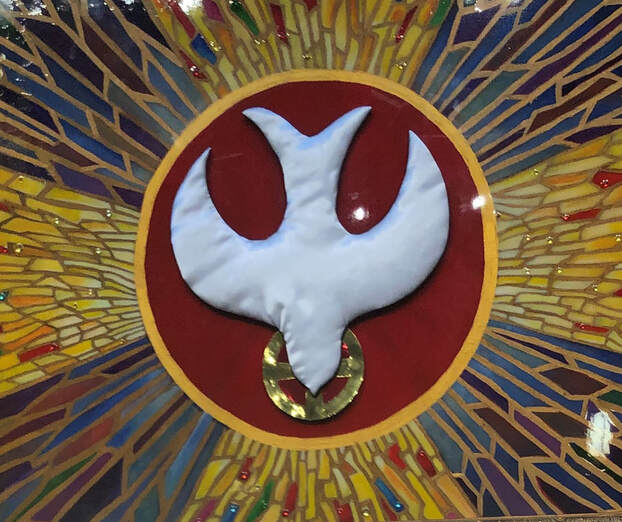
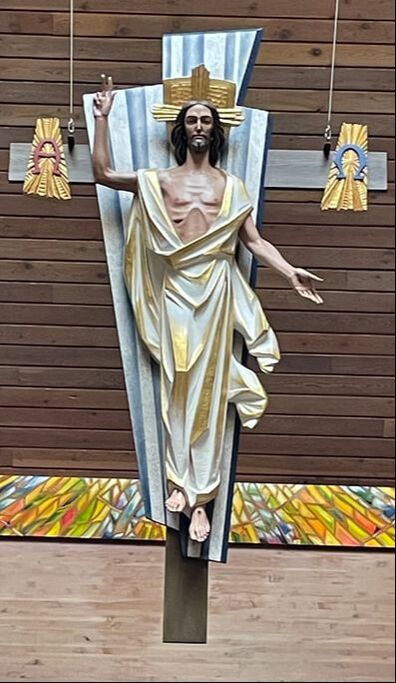

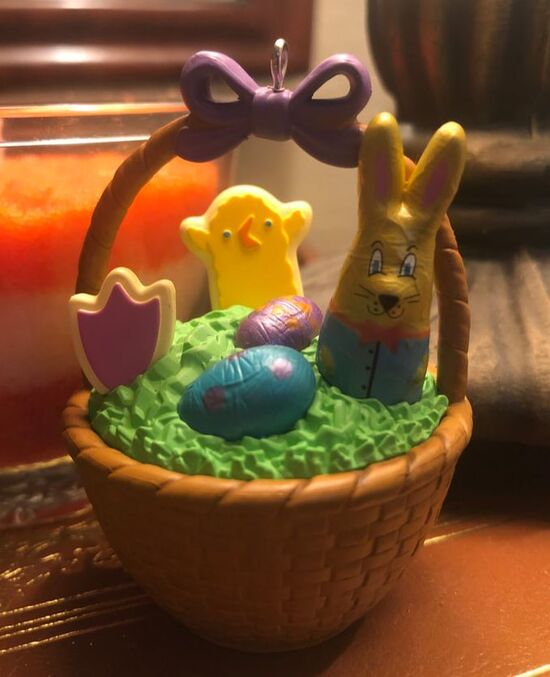


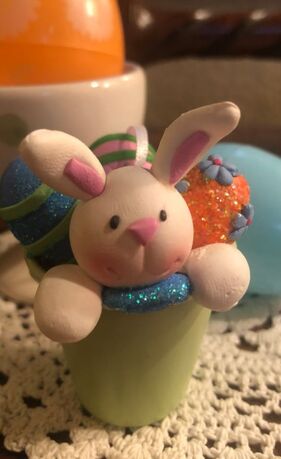
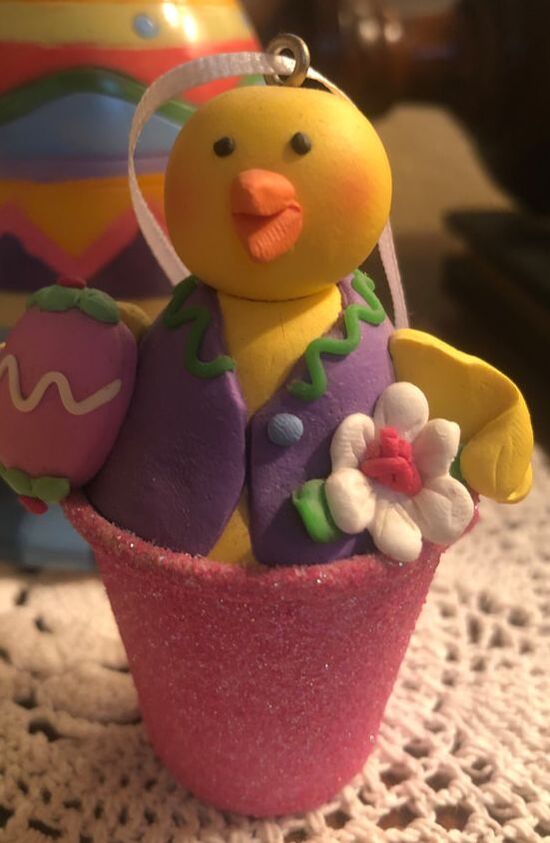





 RSS Feed
RSS Feed
